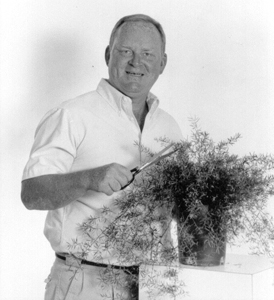LATE SUMMER TIPS
 Watering your plants, especially those that are containerized need to be kept watered and fertilized several times during the week unless it happens to rain. But don’t be fooled by a quick downpour as potted plants rarely get enough water into the pot and root system where it is needed. I have been seen watering potted garden mums and potted shrub plants with an umbrella because I know that the rain is not enough. And remember to water early in the day so that your plants go into the evening with dry foliage.
Watering your plants, especially those that are containerized need to be kept watered and fertilized several times during the week unless it happens to rain. But don’t be fooled by a quick downpour as potted plants rarely get enough water into the pot and root system where it is needed. I have been seen watering potted garden mums and potted shrub plants with an umbrella because I know that the rain is not enough. And remember to water early in the day so that your plants go into the evening with dry foliage.
Harvesting your garden crops is important because picking your summer squash and zucchini often results in more fruit down the line. Picking tomatoes also means picking and removing damaged or rotten tomatoes and getting them out of your garden. Harvesting flowers should be done before the blooms are fully opened then placed in a vase of water for your indoor enjoyment. Collecting seeds can be done when the blooms are over-developed by shaking the blooms over paper or a small bag. I like to use those 2 lb. small white bags that hold onion sets. You can easily write on the bag just what’s inside then store in a refrigerator.
Remove old damaged plants and foliage continually to help keep your plants growing and to help fight against disease and insects. Cut off tall, spent flowers from yucca, yarrow, hosta, daisies, and any other plants with dead blossoms. Many of your flowering perennials will simply drop seeds from the old flowers that will later grow into more plants for next year. If this is your plan, then hesitate on the clean up of those spent flowers or at least shake them vigorously before removing and know which plants can best be re-produced from seed. Many perennials are better multiplied through “splitting” and not from seeds.
You can compost most of the plant material from your yard and garden by mixing one part soil with 6-8 parts plant material. Add granulated fertilizer and lime to the mix then water. It is important to turn over your compost pile often during the fall season and occasionally throughout the winter. Weeds can be included in the “pile” but not weed seeds or large weed root clumps. So basically, only weed foliage before they flower or go to seed. Weed seeds are just like any other perennial; they will survive the winter and produce a bountiful new crop of weeds next year.
- SURPRISE LILIES - August 12, 2016
- PRUNING PERENNIALS IN JULY - July 29, 2016
- WHOOPS — EASY FIX - July 15, 2016


